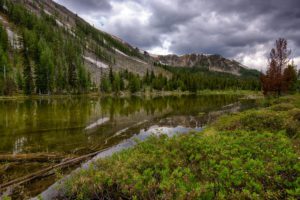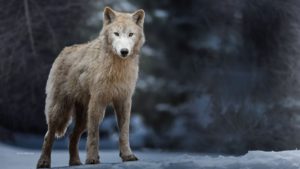FOR IMMEDIATE RELEASE November 4, 2022
Contacts:
Laura Cunningham, Western Watersheds Project, (775) 513-1280, lcunningham@westernwatersheds.org
Lisa Belenky, Center for Biological Diversity (415) 385-5694 lbelenky@biologicaldiversity.org
Humboldt-Toiyabe National Forest Denies Proposal for New Livestock Grazing Across 33,000 Acres in Big Win for Sage-Grouse, Other Wildlife
BRIDGEPORT, Calif.— The Humboldt-Toiyabe National Forest released its final decision today to deny cattle grazing on almost 33,000 acres of scenic, biodiverse public lands in the Eastern Sierra. The area harbors habitat for bi-state greater sage-grouse, rare Sierra Nevada bighorn sheep and Lahontan cutthroat trout.
The U.S. Forest Service had been reviewing whether to initiate cattle grazing on inactive allotments where sheep grazing was discontinued to protect Sierra Nevada bighorn sheep from domestic sheep-borne disease. The four allotments have been free of all livestock grazing for approximately 15 years, allowing these rare high-elevation habitats to recover.
“The Forest Service made the correct decision to conserve these popular public lands and the wilderness area free from commercial livestock grazing,” said Laura Cunningham, California director at Western Watersheds Project. “These Eastern Sierra landscapes are very biodiverse, and we are pleased the Lahontan cutthroat trout will have clean streams, and whitebark pine and other native species will be able to thrive here.”
The Bridgeport Southwest Grazing Project would have authorized cattle grazing, in response to a local rancher’s request, around the Virginia Lakes region and part of the Hoover Wilderness Area, designated by Congress in 1964.
“This well-reasoned decision protects gorgeous high-elevation forest lands that are a biodiversity hot spot for many imperiled species, including Sierra Nevada bighorn sheep, sage-grouse and Yosemite toads,” said Lisa Belenky, senior counsel at the Center for Biological Diversity. “We’re thrilled the Forest Service rejected this ill-conceived proposal to allow cattle grazing on these public lands. It would’ve put rare animals at risk, polluted clean mountain streams and harmed riparian areas and recreation.”
In her decision, Bridgeport District Ranger Megan Mullowney wrote: “I feel my decision to select the No Action alternative is in keeping with the spirit of the Multiple Use Sustained Yield Act because not authorizing conversion to cattle grazing enhances the ability of NFS lands in the project area to provide high quality habitat for terrestrial and aquatic wildlife species as well as watershed protection. These ecosystem benefits and natural resource values were highlighted repeatedly in responses received during scoping and public comment periods. I have decided the protection of threatened and endangered species populations and habitats as well as water resources provided by NFS lands in the project area is of far greater relative value to the American public than the potential benefits realized from livestock production.”
The Forest Service listed grazing’s damage to streams and water quality as a deciding factor. Lahontan cutthroat trout habitat would have been harmed by loss of ground cover, soil compaction and fewer plants in riparian areas, decreasing the ability to filter pollutants such as fecal bacteria, nutrients and sediment. The agency also wanted to protect whitebark pine, a federally proposed listed species, from potential cattle trampling of roots and saplings, as well as soil compaction.
“Cattle grazing and water facility development could lead to degradation of productive mesic meadow and riparian habitats that are important for sage-grouse foraging and brood-rearing success,” Cunningham said. “This decision by the Forest Service will go far to let these High Sierra meadows continue recovering from historic livestock grazing.”
The Sierra Nevada slopes and streams proposed for cattle grazing are in the ancestral homeland of the Bridgeport Paiute and other Paiute and Shoshone people.
Photo available for media use: contact Laura Cunningham at lcunningham@westernwatersheds.org
##






